A once in a lifetime research experience for two UTRGV students led to the discovery of some interesting (and potentially new) deep-sea creatures off the coast of Chile. Two UTRGV students, Megan Francis and Elyssia Gonzalez, and Dr. Erin Easton, UTRGV assistant professor with the School of Earth, Environmental and Marine Sciences, conducted research aboard two recent expeditions which discovered more than 200 never-before-observed species within the region. Facilitated by Schmidt Ocean Institute, two expeditions ventured into the Nazca and Juan Fernandez Ridge, as well as the Salas y Gomez Ridge to Rapa Nui (Easter Island). Some of these species found are still being analyzed to determine whether they are new to science.
UTRGV professor, students conduct research aboard recent expeditions which discovered more than 200 never-before-observed species
Wednesday, April 10, 2024
Research, Science and Technology
By Amanda A. Taylor-Uchoa
RIO GRANDE VALLEY, TEXAS – APRIL 10, 2024 – A scientific vessel called the Falkor (too) drifts across an endless expanse of waves with a cargo of international scientists, on a mission to explore the depths off the coast of Chile and the elusive sea creatures waiting far below.
Among the scientists aboard are UTRGV’s Dr. Erin Easton, assistant professor with the School of Earth, Environmental and Marine Sciences and scientist on the Schmidt Ocean Institute Research vessel, and two UTRGV students she is mentoring: Elyssia Gonzalez, a grad student pursuing a master’s degree in Ocean, Coast and Earth Sciences, and Megan Francis, a sophomore pursuing a Bachelor of Science in Marine Biology.
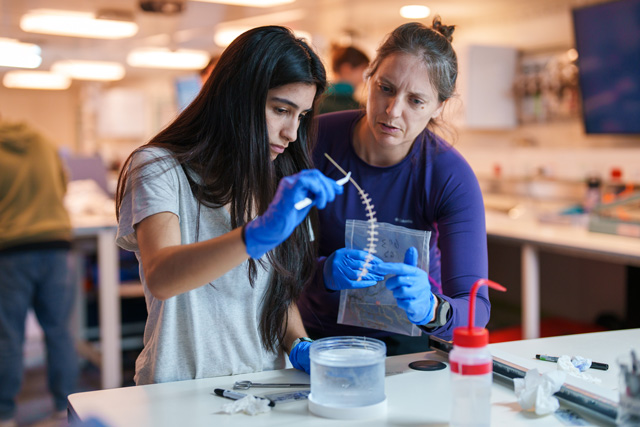
The research underway from two expeditions has already yielded more than 200 species living on seamounts – underwater mountains formed by volcanoes. Those species are either newly discovered or new to the area under study.
Identification of various types of deep-sea corals, glass sponges, sea urchins, amphipods and numerous other species was facilitated by Schmidt Ocean Institute, a private, nonprofit foundation established to advance oceanographic research, discovery and knowledge.
The researchers, using a remotely operated vehicle (ROV) called SuBastian, are able to guide it along the 2,900-kilometer underwater mountain chains known as the Nazca and Salas y Gomez Ridge.
Easton said both UTRGV students were able to assist her with identifying species, working with software to help catalogue specimens, getting hands-on experience in a working marine lab, and conducting biological analysis with samples sent to the surface from SuBastian.
“I think this type of research opportunity is really priceless for students,” she said. “A lot of students aren’t able to go on their first cruise until they’re long into their postgraduate work, and having this experience now can be really foundational in helping them decide what they want to pursue in their careers.”
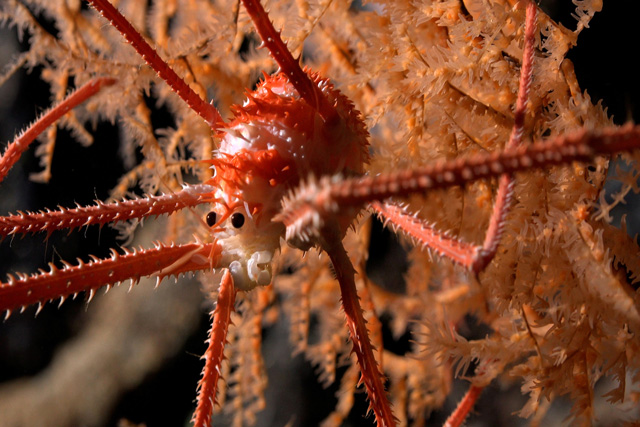
LEARNING AT SEA
Schmidt Ocean Institute hosted two exploratory expeditions, one from Jan. 8 to Feb. 11, and the other from Feb. 24 to April 4.
During the first expedition, scientists primarily investigated the Nazca and Juan Fernandez Ridge seamounts where 100 suspected new species were discovered. In the most recent expedition, which concluded this month exploring the Salas y Gomez Ridge to Rapa Nui (Easter Island), scientists observed 160 species that had not yet been known to live in the region; 50 of them are suspected to be new to science.
While aboard the Falkor (too), UTRGV students Francis and Gonzalez were able to work in laboratories alongside Schmidt Ocean Institute scientists to observe findings from SuBastian, which is capable of descending to depths up to 4,500 meters (about 14,564 feet, roughly equivalent to the height of the Matterhorn in the Alps).
Easton recalled being able to go on research cruises during her own time in college.
“I had a lot of support from my professors to have cruise opportunities, so I wanted to make sure to offer the same thing,” she said. “I opened the opportunity to any marine biology student at UTRGV, so these students applied and showed a lot of interest, and I brought them along.”
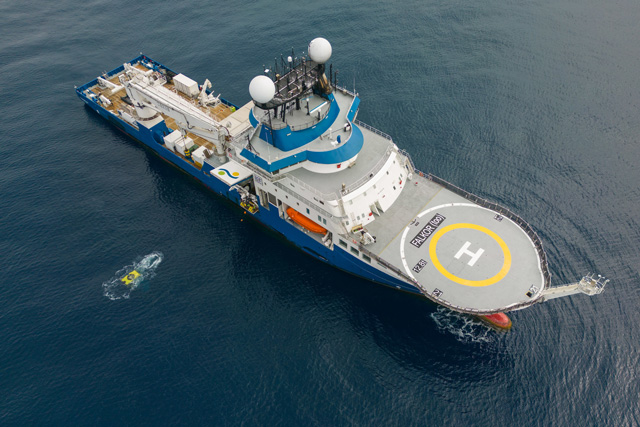
Francis, originally from Sharon, Massachusetts, was part of the ship’s second expedition, working in the lab to catalogue specimens and conducting tests along with fellow undergrad and graduate students from around the world.
She was trying to absorb as much as she could from what she knew was a once-in-a-lifetime opportunity.
"I've never gone on any expedition, let alone a 40-day expedition, and it's just so amazing,” Francis said. “It's a little bit surreal. I’m working with grad students from Chile studying the different species we’ve encountered and cataloguing them. It’s surreal seeing these pictures of creatures I used to watch videos of and now actually seeing them in action.”
Francis, gazing occasionally at the open ocean outside her cabin window, said that while life aboard the ship could become hectic, being able to look outside and see the ocean surrounding her was grounding.
“I just don’t think I can stress enough how excited I am,” she said.
During her expedition, Francis was able to explore the intersections between her major and her other field of interest, medicine.
“I think one of the best parts of getting to be on a cruise like this is being able to understand what marine biology could be for me,” she said. “It's really wonderful that I get to practice lab techniques that will become useful in the future, will allow for more opportunities. Also, just being able to work in a multicultural lab setting is amazing.”
Gonzalez, aboard the first expedition, said the impact of being able to conduct this type of research is pivotal for her future career within ocean, coast and earth sciences.
“Being able to jump into the world of the ocean and being able to have that hands-on experience, collaborate with the fellow students on board and shadow and learn from the research professionals, is a once-in-a-lifetime experience, for sure,” she said.
Her role during the expedition included retrieving samples from SuBastian and working in the lab with scientists.
“I learned early on to establish a routine because the hours go fast,” she said. “I got to prepare sample tubes, label the containers that would be used to store and gather specimens, and process them in the lab.”
Gonzalez was able to process sea urchins, sea stars and mollusks, among many other deep-sea organisms.
“I love coral reefs,” she said. “I got to see this really cool spider crab. Just being able to learn how to process these samples for analysis and prepare them for biological analysis was really awesome,” she said.
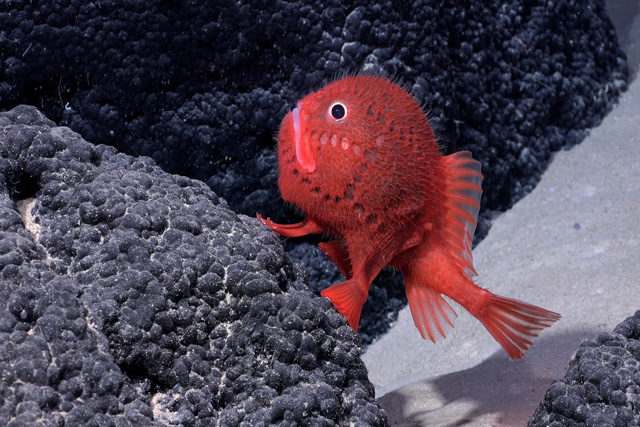
THE CREATURES
Squat lobsters, spiraling corals and whiplash squid are just a few of the newly observed species within the Nazca Ridge area. While as many as 100 new species of deep-sea animals may have been discovered, it will take time to confirm if those species are new to science.
A bright red “fish with feet” called Chaunacops is among the species highlighted. The Chaunacops is a genus of bony fish in the sea toad family Chaunacidae. It has modified pelvic fins that allow it to land softly on the rocky sea floor and “walk.”
Other species observed include squat lobsters – dorsoventrally flattened crustaceans with limbs much longer than their bodies – and delicate glass sponges known for spicules that fuse to form intricate patterns.
In the most recent expedition on the Salas y Gomez Ridge, scientists set a record for sighting the deepest-known, photosynthesis-dependent animal in the world – a Leptoseris, more commonly known as a wrinkle coral. These types of corals are known for their intense fluorescence and vivid colors.
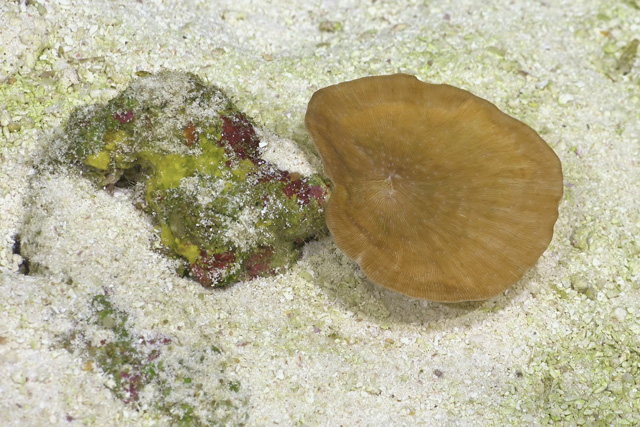
Each seamount hosted distinct ecosystems, including vulnerable deep-sea coral reefs and sponge gardens. Scientists are still analyzing the physiology and genetics of the specimens they suspect are new to science, to confirm if they are new species.
Dr. Javier Sellanes of the Universidad Católica del Norte in Chile, lead scientist on the first expedition, hopes the new discoveries will help push for protection within this area.
“We far exceeded our hopes on this expedition. You always expect to find new species in these remote and poorly explored areas, but the amount we found, especially for some groups like sponges, is mind-blowing,” Sellanes said. “These thriving and healthy ecosystems indicate that the Nazca-Desventuradas and Juan Fernández Marine Parks effectively protect delicate marine habitats.”
Easton said that, on the first expedition, while more than 100 potential new species were observed, at least 150 new registrations of species within the Desventuradas region also were encountered. Some of the species within the 150 new registrations are known but have never been observed before in that region of the world.
“We believe there’s at least 100 potential new species from crustaceans, corals, sponges, fish and echinoderms (like sea stars),” Easton said.
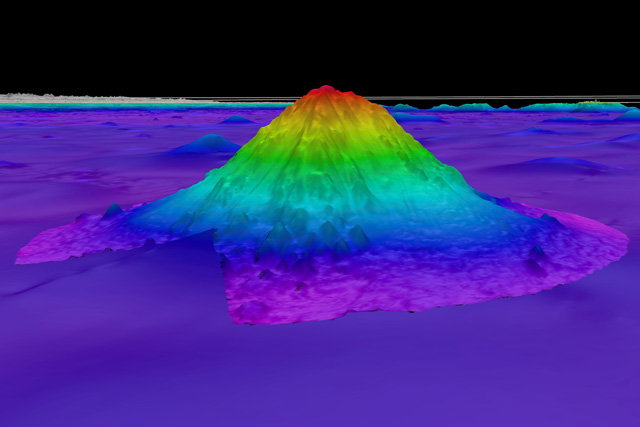
ONGOING RESEARCH
Research teams aboard the vessels explored the Nazca and Salas y Gomez Ridge, both inside and outside Chile’s jurisdiction, to collect data that could support the designation of an international high-seas marine protected area.
“The research we’re conducting is going to provide the scientific basis for decision makers so that they can develop management plans for those marine parks already existing within the nation jurisdiction in Chile and can also provide the scientific basis to move initiatives forward to protect areas on the high seas,” Easton said.
During the most recent expedition, researchers hope that enough scientific basis has been collected to inform the management of existing marine protected areas and potentially expand them, particularly around the island of Rapa Nui.
With the seamounts providing ideal habitats for an abundance of biodiversity, Easton said, regions like these need protection at all costs.
“The observation of distinct ecosystems on individual seamounts highlights the importance of protecting the entire ridge, not just a few seamounts,” Easton said. “We hope the data collected from this expedition will help establish new marine protected areas, including on the high seas on the Salas y Gómez Ridge.”
Each cruise utilized live streaming events so that audience members joining via YouTube could see and discover new observations in real time with the scientists aboard the Schmidt Ocean research vessels. Underwater dives were livestreamed on the Schimdt Ocean Institute’s YouTube channel as scientists explored areas deeper than 600 meters for the first time.
“The fact that we have technology to livestream these events has the potential to have a huge impact on our world and help people understand the biodiversity of our oceans, the importance of our oceans, the beauty of our oceans and hopefully it will help encourage people to support the protection of our oceans,” Easton said.
Schmidt Ocean Institute will continue to operate in the Southeast Pacific, conducting research and exploring the waters off Peru and Chile, throughout 2024.
To see some of these new creatures and watch Easton in action, visit the YouTube link here.
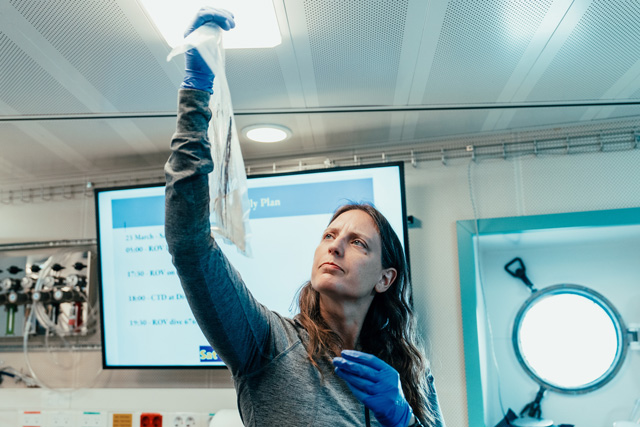
ABOUT SCHMIDT OCEAN INSTITUTE
Schmidt Ocean Institute was established in 2009 by philanthropists Eric and Wendy Schmidt to catalyze the discoveries needed to understand our ocean, sustain life, and ensure the health of our planet. Schmidt Ocean Institute pursues impactful scientific research and intelligent observation, technological advancement, open sharing of information, and public engagement at the highest levels of international excellence. For more information, visit www.schmidtocean.org.
ABOUT UTRGV
The University of Texas Rio Grande Valley (UTRGV) was created by the Texas Legislature in 2013 as the first major public university of the 21st century in Texas. This transformative initiative provided the opportunity to expand educational opportunities in the Rio Grande Valley, including a new School of Medicine and a School of Podiatry, and made it possible for residents of the region to benefit from the Permanent University Fund – a public endowment contributing support to the University of Texas System and other institutions.
UTRGV has campuses and off-campus research and teaching sites throughout the Rio Grande Valley including Brownsville (formerly The University of Texas at Brownsville campus), Edinburg (formerly The University of Texas-Pan American campus), Harlingen, Weslaco, McAllen, Port Isabel, Rio Grande City and South Padre Island. UTRGV, a comprehensive academic institution, enrolled its first class in the fall of 2015; the School of Medicine welcomed its first class in the summer of 2016, and the School of Podiatric Medicine in the fall of 2022.
